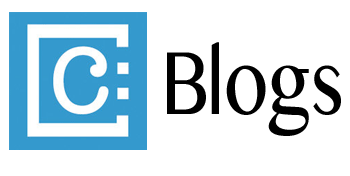Over time the audience walked on and disturbed the seed of my Birdseed Doilies’ lace-like patterns. These dismantled drawings became my first collaboration with the audience. Then I asked gallery visitors to alter and add to the doilies, making them so large that at least navigating them was unavoidable in the space.

In the last few years, I have been orchestrating others to build the drawings, providing points to begin their drawings, and then providing feedback and moving them across the space to balance out the design’s composition. My first example using this method was letting go, to seed, an exterior installation at Belleville’s Schmidt Art Center’s patio.
My first public artwork, Seed the Change, was a chance to scale up these explorations of labor, change, and collaboration in a monumental fashion.
Seed the Change was a 400-foot-long drawing in birdseed on the ground with the public. It was my answer to the Public Works Project commissioned by Critical Mass for the Visual Arts—allowing an artist to select a site within the City of St. Louis to create a temporary artwork on a $10,000 budget. My underlying design, based on Missouri native plant shapes, was outlined in chalk the night before. Visitors walked through, added to, and manipulated the drawing throughout the day. The drawing morphed with the engagement of the audience, growing and changing. To emphasize the actual physical work of making our city a more inviting place, Critical Mass for the Visual Arts and I featured organizations during the event that share the mission to improve the city. Activities at tables and tents highlighted these groups’ work, created a festival atmosphere, and sparked discussion on how others can shape our city. My hope for Seed the Change was that it highlighted the city’s human potential, creating a welcoming space shaped by its people that embodies the beauty of labors of love, conversation, and individual expression. I needed volunteers, passersby, and community members to channel their inner artist and help create something together with 1.5 tons of birdseed. My greatest fear was: What if no one showed up?
1) Select a site that would be heavily trafficked.
I needed a sidewalk space that was safe with heavy foot traffic. The Gateway Arch Monument was a perfect backdrop and imparted “St. Louis.” Because of regulations for the federal park itself (no signage, no stationed cameras, etc.) I couldn’t do the project there. However, the newly designed riverfront directly to the east was available and eager for programming to create a community space. Seed the Change was scheduled on the official opening weekend of the newly designed riverfront, ensuring that even construction challenges would be tempered by the “Grand Opening” weekend crowd. I had a water fountain, picnic tables, and food trucks stationed nearby to encourage visitors to explore and stay longer.
2) Engage organizations whose missions align with the project AS EARLY AS POSSIBLE.
I partnered with organizations working to improve the social or environmental health of the city. Each would host a hands-on activity related to the artwork. After reaching out to the Missouri Botanical Garden, I was connected to their Biodiversity Network, and I contacted each member organization personally. I now have a network of experts and colleagues for future projects as well as access to their specific audience. Because non-profits are lean organizations, getting them on board early eases scheduling of their limited staff and resources.
3) Personally welcome the public to join in.
I wanted to ensure I had enough crew to fill in the large drawing and have the design visible from top of the Arch itself. But I also hired Art Ambassadors, a team of people assigned to explain the project and invite people to draw as they walked past. I lined up buckets and cups of seed along the sidewalk to encourage passersby to join in across the riverfront. For the next event, I labeled my buckets and cups with laminated cards on the project and a large “JOIN IN” sign to aid communication. (Both of these ideas were solicited from my crew on feedback forms.) Next time, I’ll make YouTube videos both for training and to explain the project to the public and invite them to join in.
The real delight of Seed the Change was all the details added by those who were present. A festival atmosphere was evident when you explored the Riverfront and saw all the additions to the original drawing.
4) Crowd source your documentation.
I used an Instagram feed on the project website to showcase immediate images in real time and have social networks draw people to the site. I was able to test it by promoting the project with the same hashtag. My next project will have an assigned person campaigning throughout the day on multiple platforms.
